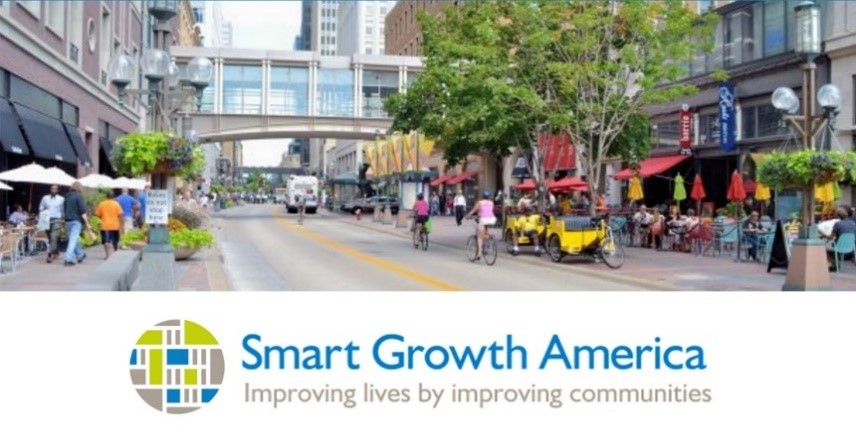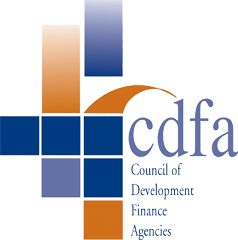
February 2021
In This Issue
Spotlight: EDA CARES Act Funding to Detroit Revolving Loan Fund Supports School for Aspiring Beauticians Marlene Brooks, owner of Dymond Designs Beauty School in Detroit, received a loan from the Detroit Economic Growth Corporation to help her through the pandemic. Before the coronavirus pandemic, about 80 aspiring beauticians attended classes at Dymond Designs Beauty School in downtown Detroit to learn about cosmetology, esthetics, manicuring, and natural hair cultivation. Now the school’s enrollment is about half, and most of the students are learning remotely. “The pandemic hit us hard. When we couldn’t train, everything stopped,” said school owner Marlene Brooks, whose students are mostly women of color living in the Detroit area. In the early weeks of the pandemic, Brooks’ beauty school – which she started in 2018 – was nearly shuttered. As her tuition cashflow stopped, Brooks acted fast and spent about $10,000 for video cameras, audio/visual technology, and an online learning platform that would allow teachers to give lessons remotely. Brooks managed to keep all of her seven-person staff, but she did have to forego paying rent on her 9,000-square-foot school for nearly a year. “We had multiple, multiple challenges,” said Brooks, who also owns a hair salon in the same Harbortown business strip. In late January, Brooks got a lifeline via the Detroit Economic Growth Corporation (DEGC), which in August 2020 received a $2.9 million EDA CARES Act grant to capitalize and administer an RLF to make loans to coronavirus impacted small businesses in Detroit. Success Story: Understanding the Impact of COVID-19 on Economic Development through EDA and Historically Black Colleges and Universities Historically Black Colleges & Universities logo In late 2020, EDA collaborated with the White House Initiative on Historically Black Colleges and Universities (HBCU) and the National Association of Development Organizations Research Foundation to host a webinar series entitled, “EDA and HBCUs: Cultivating Strategic Engagement for Regional Economic Development.” The webinar series addressed the critical juncture of COVID-19 and its disproportionate impact on communities that are under-served and under-resourced. This webinar series harnessed EDA’s commitment to elevating the dynamic work of HBCUs through its Economic Development District (EDD) collaboration and its ability to convene powerful interagency partners through its Economic Development Integration (EDI) team. The webinars featured three HBCU University Centers located in the Atlanta, Austin, and Philadelphia regions, and presenters from Delaware State University, Fayetteville State University, Morgan State University, and Southern University and A&M College. EDA's University Center Economic Development Program makes the resources of universities available to the economic development community. Through this dynamic partnership, academic institutions make resources available to the larger community, acting as hubs of innovation and economic development. Speakers discussed the tools, programs, and partnerships their schools provide, sharing challenges and successes as well as future plans for impact. Malika Mercer-Bennett, Director of the EDA University Center at Fayetteville State University (FSU), emphasized how HBCUs have sought to identify and address regional community needs since the first schools were established in the nineteenth century. FSU’s impressive regional planning and workforce development efforts have resulted in substantial economic gains within the surrounding Cumberland County region. In 2016, the value of the school’s impact on Cumberland County economy was calculated at approximately $712 million. Highlight: Rutgers University Center for Urban Entrepreneurship and Economic Development Focuses on Inclusion in the Innovation Sector Actual WAYBAND device and rendering of how the technology helps a walker/runner stay within the “virtual corridor.”
The Center for Urban Entrepreneurship and Economic Development (CUEED) at Rutgers Business School is working to make inclusion in the innovation sector a focal point. CUEED is driven by recent studies with some sobering statistics, including that fact that less than 1 percent of all high-growth technology startups are led by Black or Latinx entrepreneurs. Minority-owned businesses are also 34.7 percent less likely to receive an investment from the $48 billion VC industry. In September 2020, EDA awarded a $300,000 Build to Scale program grant to CUEED’s newest tool, the Black and Latino Angel Investment Fund (BALIF) of New Jersey. The EDA investment empowered the organization to hire an expert fund manager and administrative support to lead their due diligence efforts, and also immediately catalyzed $115,000 from other private sector Angel investors. “We are looking for growth companies owned or led by people of color who want to pitch to the Angel Fund,” said Lyneir Richardson, CUEED’s Executive Director. “Equally important, we are continuing to meet (by Zoom) with people who are interested to join us as Angel Investors. We can be the ‘friends and family’ round of capital and help people of color scale their companies.” At their last meeting, CUEED voted to make their first investment in a firm called WearWorks. Founded by a diverse team of three entrepreneurs, WearWorks offers new technology for the blind and visually-impaired. The business prides itself on being a haptic design company that delivers detailed and nuanced information through touch. Its first product, the WAYBAND, was born after helping a blind person run the NYC Marathon without sighted assistance. The “Virtual Corridor” technology helps individuals go and stay in the right direction based on vibrations they feel on their WAYBAND device. |
|
|
|||
Smart Growth America Nuclear Closure Assistance EDA’s Research and National Technical Assistance program has partnered with Smart Growth America to make $13.5 million available to support communities making the difficult transition when a nuclear plant closes. Get more information about available assistance by checking out the program’s website. ‘Broadband and the Wisconsin Economy’ The University of Wisconsin-Madison EDA University Center team recently released its ‘Broadband and the Wisconsin Economy’ report, which was funded through an EDA CARES Act grant. The report delves into:
CDFA-EDA Revolving Loan Fund Best Practices Handbook Through the Council of Development Finance Agencies’ (CDFA) recent EDA Revolving Loan Fund (RLF) Best Practices Program, several common characteristics emerged from high-performing RLFs. The best practices outlined in CDFA’s Best Practices Handbook synthesize these exceptional traits and address the strategies employed by successful EDA RLFs of all sizes. Each recommendation includes a basic description and several resources for expanded learning. For more information about the EDA RLF Program, please visit our RLF webpage. Indirect CostsIndirect costs are costs incurred by an organization that are not readily identifiable with a particular project or program, but are nevertheless necessary to the operation of the organization and the performance of its programs. The costs of operating and maintaining facilities, depreciation, and administrative salaries are examples of the types of costs that are usually treated as indirect costs. For more about indirect costs payable to specific EDA projects, please visit EDA’s new Indirect Costs webpage.
EDA in the News!Accelerate Northside Program Aims To Help Small Businesses South central Minnesota manufacturers hit hard by pandemic The Virus and the City: What’s Next for Latinx-Owned Businesses Voinovich School, OMEGA, Buckeye Hills awarded $2.2M EDA grant to boost community economic growth U.S. Department of Commerce invests $1.5 million to support implementation of a small business technical assistance program $3.4 Million Grant Will Add Jobs in Chippewa County St. Paul Tribal Government One Of Seven Nationwide Recipients Of Federal STEM Grant State focuses on rebuilding industry, jobs South Bend small- and medium-business COVID loan program begins prescreening |

